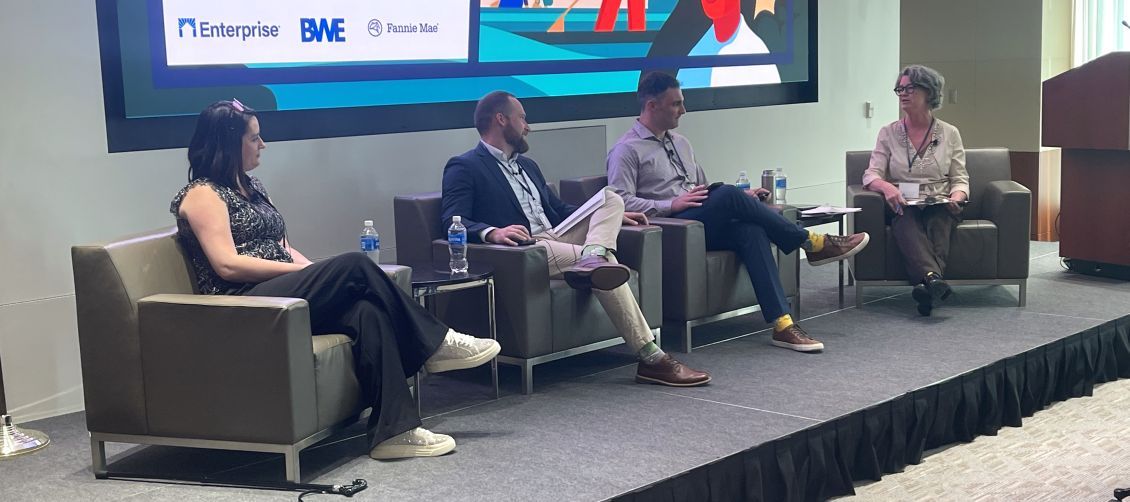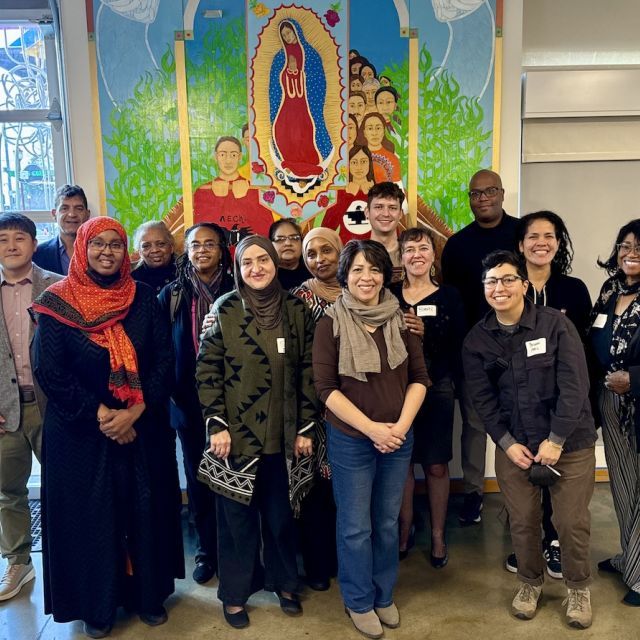More than 60 years ago, the country’s first 515 housing was built in rural Minnesota. The USDA housing program is the workhorse for rural affordability, with more than 406,000 homes in nearly 13,000 properties.
The program experienced significant production during the 1970s and 1980s, with most properties located in the Midwest and South. But with 50-year mortgages coming due and some owners opting for prepayment, these rural communities will start losing homes in significant numbers, leaving small towns facing an even greater affordability challenge.
During a two-day academy at the Federal Reserve Bank of Minneapolis, our Rural Communities team brought together elected officials, financial experts, housing providers, and state, and federal agencies to explore solutions. Part of a series of no-cost academies, the Rural Rental Housing Preservation Convening attracted participants from Virginia to Minnesota to Oregon.
The Deepening Crisis

The convening kicked off with U.S. Senator Tina Smith addressing the need for affordable housing in rural America, noting that half of all rural renters spend more than 50% of their income on housing.
“Housing at its core is a human rights issue, and it’s also an economics issue. If you don’t have a place to live, if you don’t have a home, nothing in your life works – not education, jobs, health, and family,” Smith said. “A good source of affordable housing is absolutely necessary for the growth of our communities.”
Starting in 2028, about 500 USDA-financed properties with a total of 15,000 units will be lost every year without proactive preservation strategies, said Robin Wolff, Enterprise Rural Communities senior director, during a 515 overview session.
Preservation is an effective and efficient approach to rural affordability since it:
- Costs less than new construction
- Prevents displacement
- Keeps vulnerable populations, including the elderly and disabled, housed
- Keeps valuable rental subsidies in the community
- Avoids NIMBYism since it’s a developed site
Preservation is especially crucial since the 515 program has not received funding for new construction since 2011, said Stephanie Vergin, policy advisor, production and preservation division, USDA Rural Development. A successful approach should motivate owners to choose preservation instead of exiting and bringing the property to market.
“Once mortgages are paid off, owners cannot be forced to stay in. We have to set up a program that balances appropriately the government’s interest in protecting the tenants in the units and a strong enough incentive to developers and owners to participate,” Vergin said.
Finding the Financial Fit and Putting the Pieces Together
Two panels on the convening’s first day delved into the types of financing for rural preservation work.
Bob Morton of Bellwether Enterprise and Philip Porter of Enterprise Housing Credit Investments explored the financial options, including the Low-Income Housing Tax Credit and 538 lending, and ran through live transactions and case studies using these tools.
The second panel featured three community development financial institutions (CDFIs)—Eileen Neely of the Housing Assistance Council, Joseph Mattingly of Enterprise Community Loan Fund, and Wes Johnson of Greater Minnesota Housing Fund—who discussed their approaches to supporting rural housing preservation, including first mortgages, gap funding, bridge loans, and capital magnet funds.
“We [CDFIs] get involved early, and we get involved at the closing table. We are flexible in making rural deals to help them score better in tax credit rounds,” said Neely. “If it’s safe, decent, affordable housing, it’s worth preserving.”
The day's last panel showed how the preservation pieces come together through three case studies: a complete gut rehab deal in Richland, Mississippi, an acquisition rehab in Cascade Locks, Oregon, and the preservation of 16 units built in 1978 in Kerkhoven, Minnesota.
The Public Sector and Policy
Speakers on the second day focused on the work of state and federal housing agencies as well as Minnesota and federal housing policy.
Minnesota Housing Commissioner Jennifer Leimaile Ho talked about the rise in the importance of affordability in the public realm. “Housing is impacting everyone. It [the conversation] is moving from please pay attention to us to housing is essential,” Ho said. “Everyone is talking about housing in every corner of the state.”
While new production is essential to help serve the housing needs of all Minnesotans, preservation is vital. “The USDA rural developments are critical for seniors, households on fixed income and housing stability.” The state has developed programs that explicitly preserve 515 properties and establish rural development set-asides in housing tax credit deals.
A state policy panel looked at how Minnesota created priorities to boost affordable homes and funded some of those programs with a recent state surplus. One of the panelists, state Sen. Lindsay Port, outlined her legislative approach to affordable housing. “Housing needs dedicated money, and housing needs substantial money. Housing requires sustained money that is predictable so communities can plan for their needs.”
A fireside chat with Rural Housing Service Administrator Joaquin Altoro covered USDA programs to support rural affordability, and he also addressed the need to decouple housing vouchers from mortgages. USDA Section 515 housing can only receive project-based rental assistance for residents if there is an active Section 515 mortgage. Once 515 mortgages are paid off, all rental aid is removed, leaving residents at risk of sharply increasing rents and property owners without a significant portion of their operating budget.
The convening was rounded out by a panel of national policy experts who examined appropriations for housing, specifically those impacting rural affordability, the current landscape of affordable housing, advocacy efforts, and public housing preservation.
Next Steps
While this year’s preservation academy is wrapping up, much work needs to be done, and done quickly, to prevent the loss of this crucial source of affordable housing.
Those seeking information on preserving 515 properties in their communities can access Technical Assistance from the Enterprise Rural Communities team year-round. Enterprise also continues to advocate for solutions supporting the preservation of the properties and the accompanying vouchers.
Those seeking to learn more about the 515 program and process can access recorded sessions on our Rural Rental Preservation Academy page. Stay tuned as we launch a new Academy training cohort in spring 2025.
The convening was made possible by the generous support of Fannie Mae and Bellwether Enterprise.


